A quick guide to Labour's leaders
- Published

The latest battle for the Labour leadership reaches its climax on Saturday
Labour is preparing to unveil its new (or not so new) leader. On Saturday we will learn whether Owen Smith has managed to upset the odds, and Jeremy Corbyn, and add his name to a list which includes the likes of Blair, Kinnock and Attlee.
How many more do you recognise? Scroll down for a look back at 110 years of Labour Party leaders.
Jeremy Corbyn (2015-)
FULL SPEECH: Jeremy Corbyn addresses the Labour Party conference after winning the leadership race with nearly 60% of the vote
The current Labour leader was a rank outsider when he narrowly made it onto the ballot for Labour's leadership contest. But a surge in Labour's membership helped propel him to a landslide victory, as he scored 59.5% of the vote.
A dramatic year ensued, with Mr Corbyn - the left-wing MP for Islington North - attempting to adjust to a job he could scarcely have expected and to unite a Parliamentary party that largely did not want him to be leader. The divisions came to a head when most of his shadow cabinet resigned, citing his performance in the EU referendum campaign, and MPs signed a no-confidence motion in the leader.
This led to a formal leadership contest, with Owen Smith emerging as the sole challenger to his crown.

Ed Miliband (2010-2015)
Ed Miliband: ''It is time for someone else to take forward the leadership of this party''
Labour's leadership contest after its 2010 general election defeat produced a surprise victory for Ed Miliband over his brother David.
It caused a rift in the Miliband family, with former foreign secretary David leaving Parliament and moving to New York. Ed took on the coalition government but was given a rough ride by the press, including mockery over a photograph of him struggling to eat a bacon sandwich.
The Conservatives accused him of being a puppet for the trade unions who backed him in the leadership contest and Labour struggled to shake off government accusations that they had overspent when in office.
Mr Miliband went into the 2015 general election with policies including a freeze on fuel bills and a "mansion tax" on homes worth over £1m and the polls showed Labour and the Tories neck-and-neck. It wasn't to be, however, and Labour's leader resigned in the aftermath of a Conservative victory.

Gordon Brown (2007-2010)
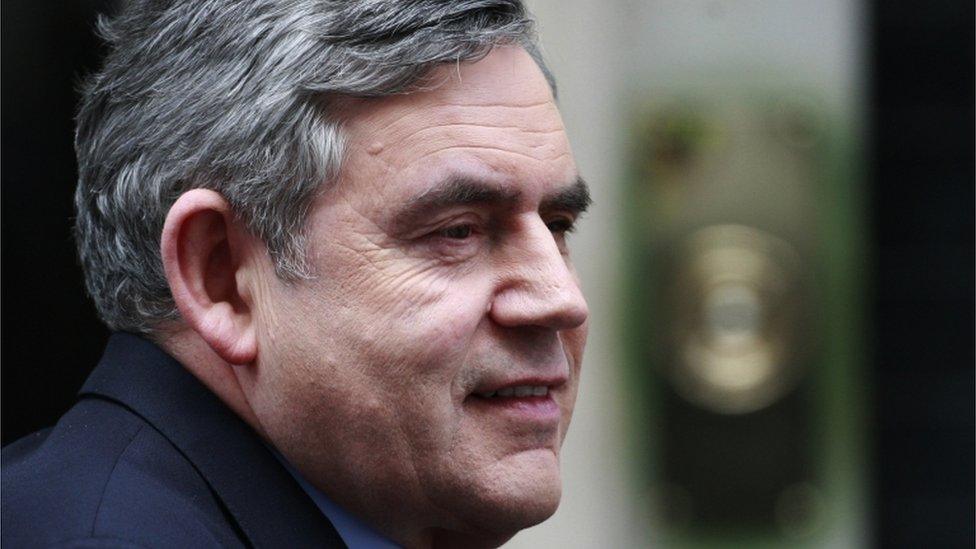
Mr Brown was a dominant figure in British politics as chancellor and later prime minister
Having long coveted the Labour top job, long-serving chancellor Gordon Brown took the helm on 27 June 2007, succeeding Prime Minister Tony Blair, as the sole candidate.
He faced several major challenges during his first months in office - including acts of terrorism, an outbreak of foot and mouth disease and widespread flooding.
His party's poll ratings improved but his decision to rule out a snap general election prompted accusations of weakness and dithering from his opponents.
He took the party into the 2010 general election after surviving the financial crash and calls to step down from some MPs.
The campaign included a memorable gaffe as Mr Brown was recorded referring to 65-year-old Gillian Duffy - who he had just met - as a "bigoted woman".
The election produced a hung Parliament. Mr Brown resigned after days of coalition talks as the Conservatives and Liberal Democrats formed a government.

Tony Blair (1994-2007)
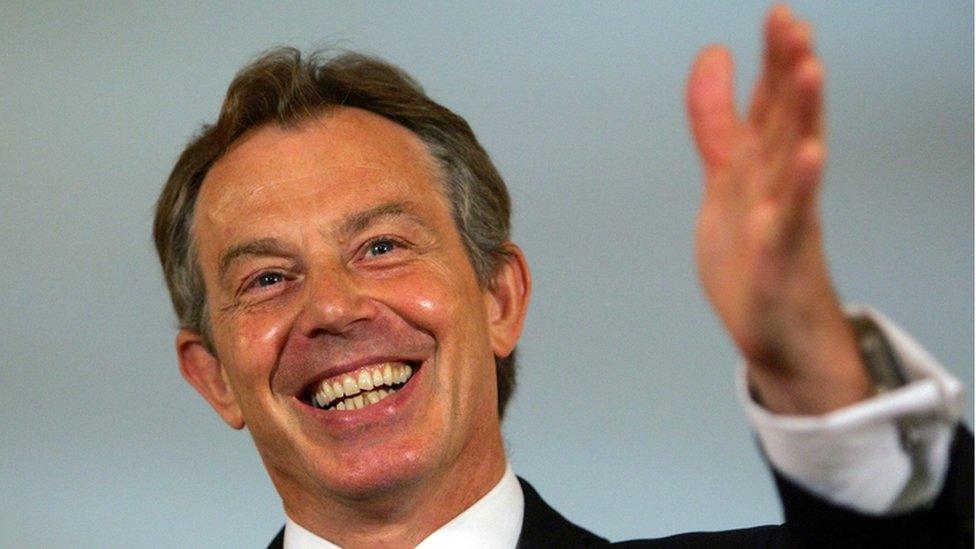
Tony Blair won three general elections but angered many in his party over his decision to go to war in Iraq
Labour's longest-serving prime minister, and its first to win three consecutive elections, Mr Blair became Britain's youngest prime minister in almost 200 years and went on to spend a decade in Number 10.
He was one of the architects of New Labour and moved the party further into the centre ground, alienating some on the left but achieving the electoral success that had long eluded it.
Public service reforms - characterised by slogans like "education, education, education" - and flagship policies like the national minimum wage were introduced, before his rifts with his chancellor came to the fore.
His second term brought his most controversial moment, the invasion of Iraq, which has dogged him ever since.
Despite the huge protests the invasion triggered at the time, Blair won another general election - in 2005 - before finally handing over to Brown in 2007.

John Smith (1992-94)

John Smith died before he could lead his party into a general election
Elected party leader with an overwhelming 91% of the vote, he set about unifying the left and right factions of Labour and attacking the government of John Major, dismissing the PM as "devalued" in his first Commons speech as leader in the aftermath of Black Wednesday.
But Smith led Labour for just two years before he died suddenly of a heart attack aged 55.
"He had achieved a personal ascendancy unmatched by any Labour leader since Clement Attlee," said the Guardian in its obituary.

Neil Kinnock (1983-92)
Neil Kinnock's election as the leader of the Labour Party is somewhat overshadowed by an unfortunate fall on Brighton beach. Clip taken from BBC News, first broadcast 2 October 1983.
After Labour's thumping general election defeat in 1983, Neil (now Lord) Kinnock won the subsequent leadership contest - but went on to lose two general elections.
He famously battled the left-wing extremities of his party, including in a memorable conference speech attacking Liverpool City Council, which was dominated at the time by the militant faction.
Kinnock's purge of this element of his party opened the way for New Labour in the following decade. He implored, cajoled and ordered Labour to modernise, comfortably seeing off a challenge to his leadership in 1988 from left-winger Tony Benn.
Unlike New Labour, his efforts were not rewarded by ballot box success. In 1992, despite leading in the polls, and oozing confidence during a famous pre-election rally, external, he was defeated - after The Sun's famous "lights out" front page warning against a Labour victory.

Michael Foot (1980-83)
Labour propose massive public investment, withdrawal from the EEC and nuclear disarmament in their manifesto for the 1983 general election
The left-wing MP, a great political orator, beat Denis Healey in Labour's leadership contest by 10 votes in a ballot of MPs. The result dismayed many on the right of the party, and was one of the main factors leading to the start of three-party politics in Britain. The following year, four senior Labour figures - named the "gang of four" -defected from the party, forming the centre-left Social Democratic Party.
The split in the party, as well as the 1982 Falklands War and an ill-judged manifesto contributed, to a heavy defeat for Labour in the general election of 1983.
Labour's share of the vote was just 27.6%, the lowest since 1918, and Foot resigned the leadership.

James Callaghan (1976-80)
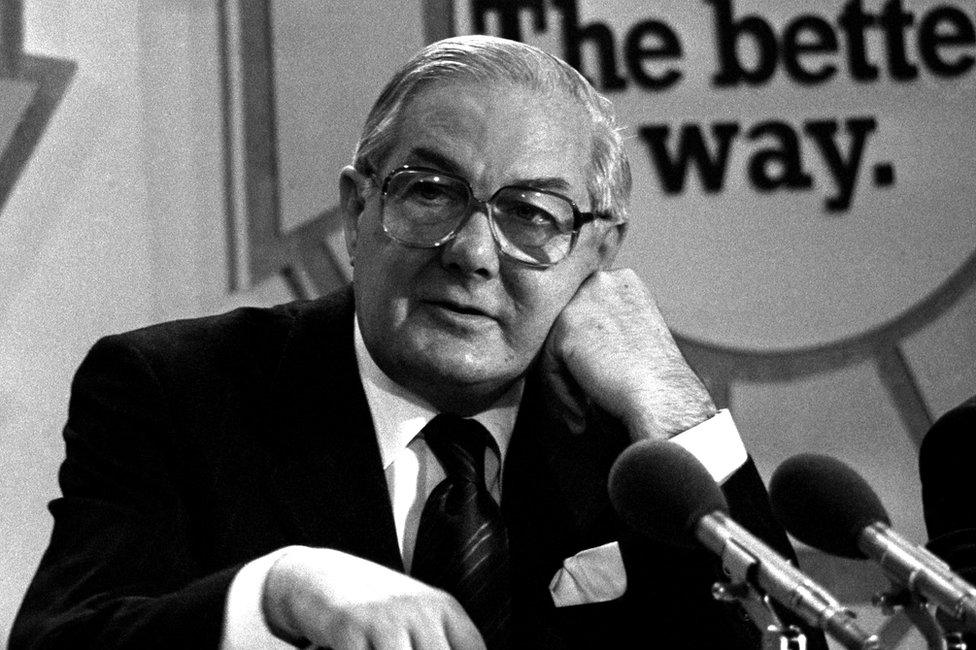
The former chancellor and foreign secretary defeated Michael Foot in the 1976 leadership contest, by 176 to 137 in the final round.
He was prime minister until 1979 and his time in Downing Street was dominated by economic recession and industrial militancy. That contributed to the election of the Conservatives and Labour's exclusion from office for the next 18 years.
His decision to postpone a general election until the spring of 1979 - only to see his government totally discredited by mass industrial militancy during the 1978-1979 "winter of discontent" - was a tactical error and he resigned as leader soon after Margaret Thatcher defeated Labour in the 1979 election.

Harold Wilson (1963-76)
On the 100th anniversary of Harold Wilson's birth, BBC Parliament looks back at his career
Harold Wilson won four general elections and held the original EU referendum.
He steered Britain away from direct military involvement in the Vietnam War, outlawed capital punishment and liberalised laws on censorship, abortion and homosexuality. Having come to power in 1964, he increased Labour's majority in 1966, but harsh economic measures and the devaluation of the pound contributed to the decline in his popularity, and the Conservatives won a narrow victory in 1970.
He returned as prime minister in 1974 and held Britain's first referendum on membership of the European Economic Community, as it was then called, in 1975. He resigned unexpectedly in 1976.

Hugh Gaitskill (1955-63)

The former chancellor was elected in a ballot of MPs to replace Mr Attlee (see below).
His proposal - following Labour's election defeat in 1959 - to modify Labour's image by altering the controversial Clause Four of its constitution was rejected by the party.
He had frequent battles with the left wing of the party and campaigned against British membership of the European Economic Community. Gaitskill died suddenly in 1963 after a short illness, aged 56.

Clement Attlee (1935-55)
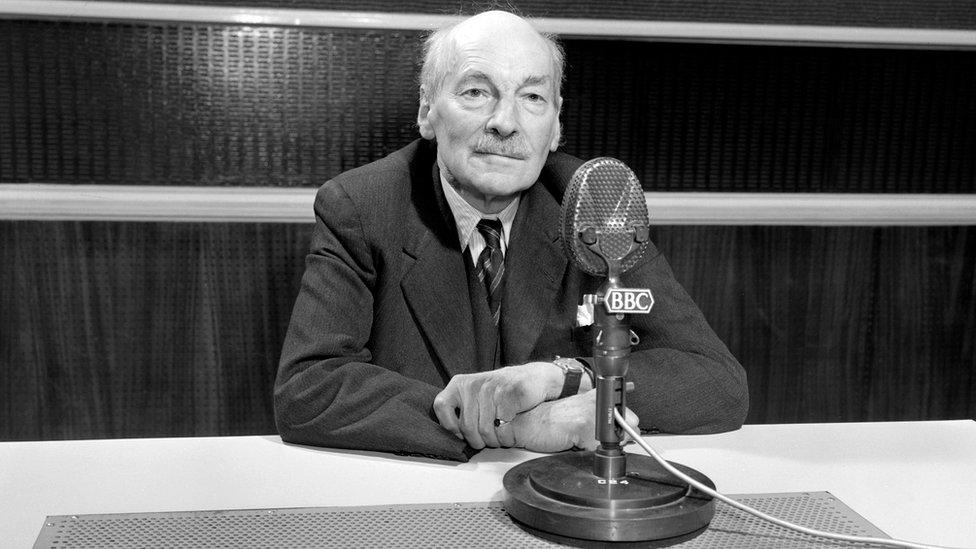
An MP since 1922, and Labour leader since 1935, Attlee was deputy prime minister in Churchill's coalition government during the World War Two.
He went on to win a landslide victory in the 1945 general election.
His 1945-1951 Labour government was seen as the most significant reforming administration of 20th Century Britain. It introduced the National Health Service, nationalised one fifth of the British economy, and granted independence to India.
Labour narrowly lost the October 1951 general election, and Attlee resigned after a second defeat in 1955.

George Lansbury (1932-35)
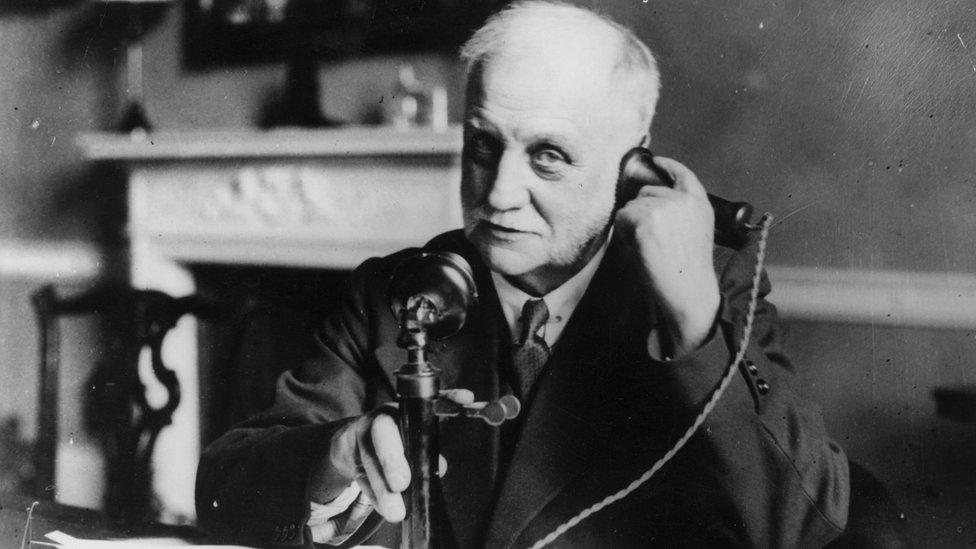
George Lansbury led Labour for three years
He took over from Henderson after Labour was defeated in the 1931 general election by MacDonald's National Government. The lifelong pacifist was replaced in 1935 by his former deputy, Clement Attlee.

Arthur Henderson (1908-10, 1914-17 and 1931-32)
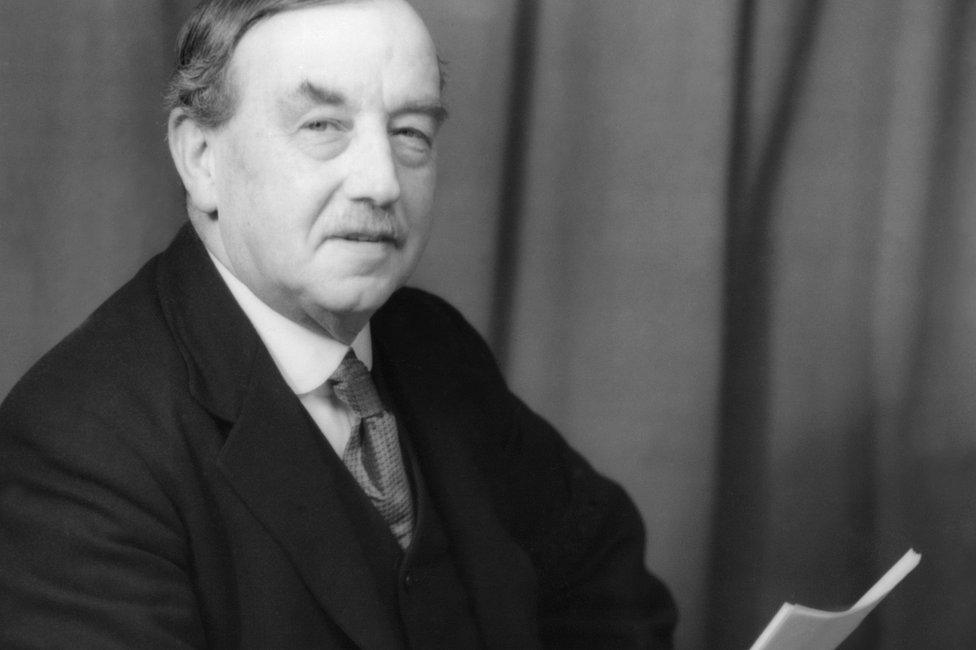
The Glasgow-born trade unionist was raised in Newcastle.
He was elected as Chairman of the Parliamentary Labour Party (as the leading figure was then known) in 1908 and he returned to replace Ramsay MacDonald as leader when World War One broke out in 1914.
Henderson was home secretary when Labour came to power for the first time in 1924 and later foreign secretary. When Ramsay MacDonald ditched the party in favour of a national government he became leader again, but Labour was crushed in the 1931 general election by the National Government and he resigned in 1932.
He won the Nobel Peace Prize in 1934 for his work on international disarmament.

James Ramsay MacDonald (1911-14, 1922-31)

He resigned in 1914 over his opposition to World War One but in 1924 he went on to become Labour's first prime minister. Labour lost power later that year but MacDonald was back in office in 1929.
He formed a National Government with Conservative and Liberal support when faced with a worldwide recession and a split cabinet.
He continued as prime minister until 1935 but his decision to lead a coalition government was considered a betrayal by many in the party he had done much to create.

Joseph Clynes (1921-22)
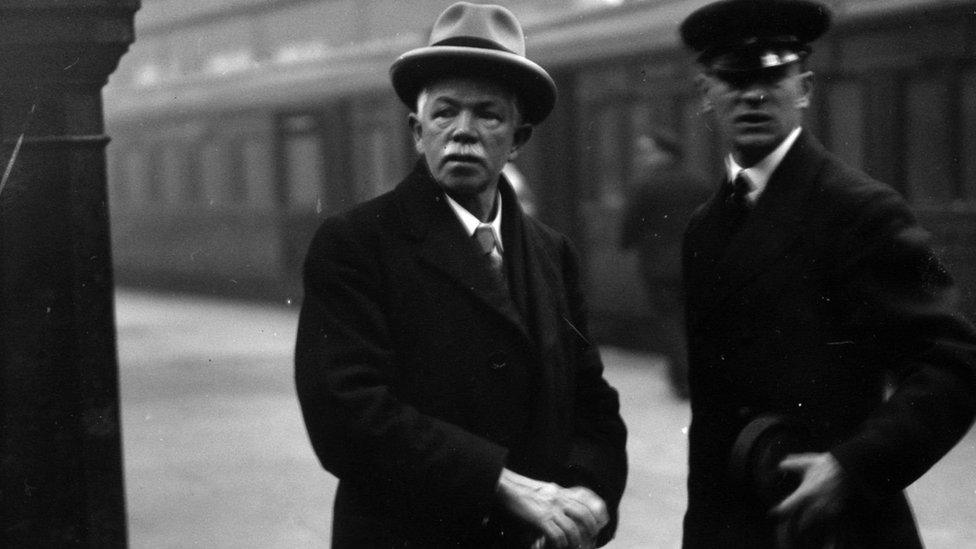
He led Labour for just a year but his reign included the 1922 general election, when Labour made a breakthrough, winning 142 seats.
Under the party rules at the time, MPs held leader elections annually while the party was in opposition - and Clynes was replaced in 1922 by MacDonald.

William Adamson (1917-21)
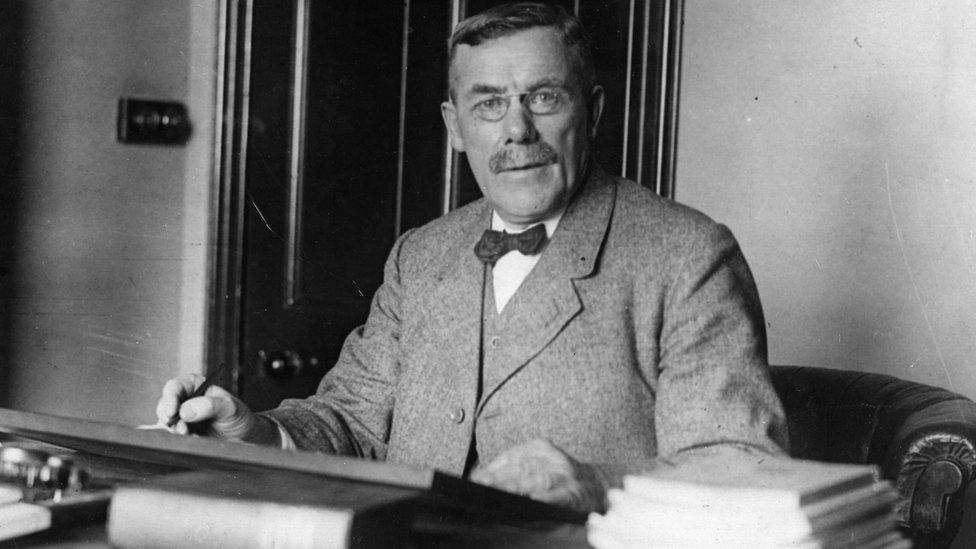
He was elected unopposed to replace Arthur Henderson in 1917.
"Solid, industrious and widely trusted, he was nonetheless a poor debater", says historian Greg Rosen in his Dictionary of Labour Biography, who also notes Adamson was the owner of a "bristling chestnut moustache".

George Barnes (1910-11)
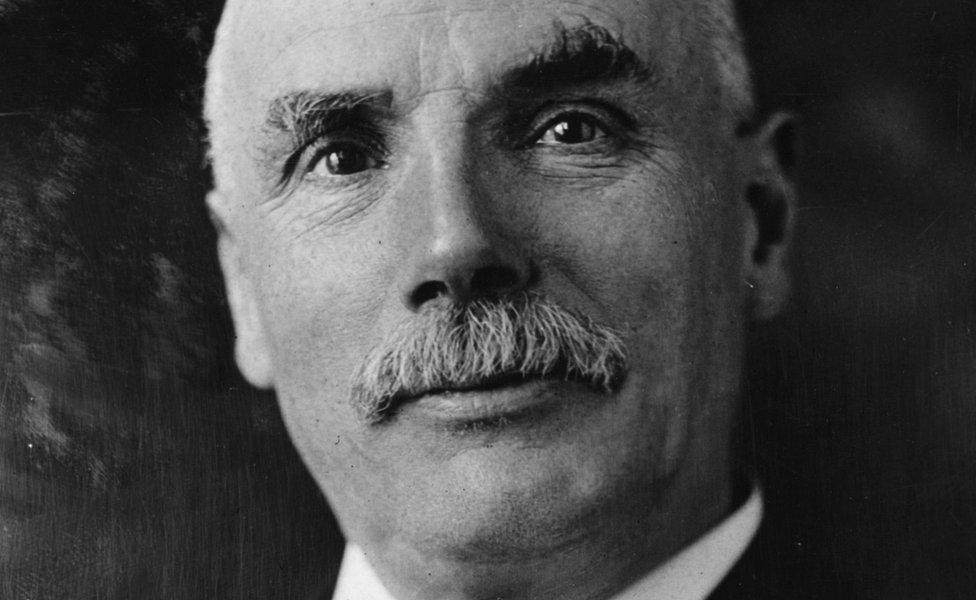
Labour's third leader lasted 358 days. He resigned after the December 1910 general election.

Keir Hardie (1906-08)
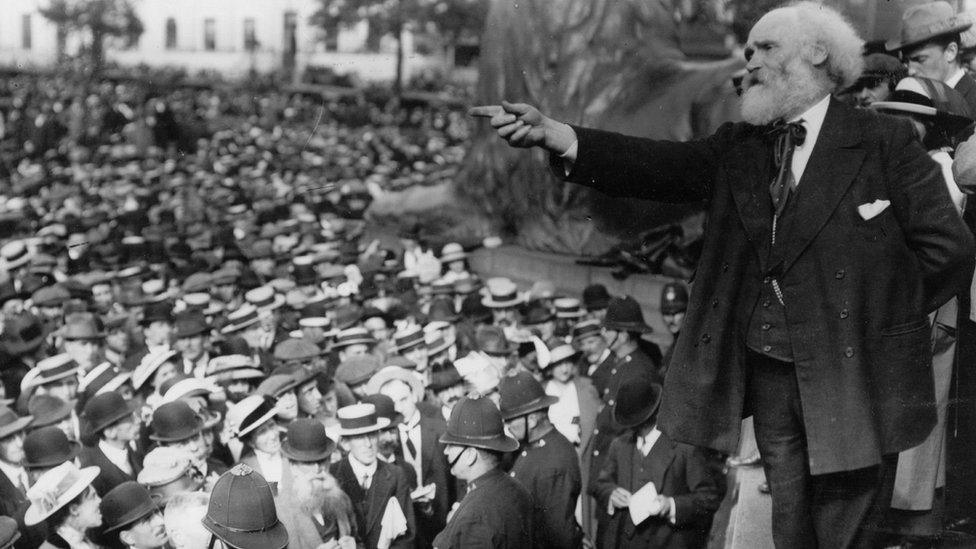
Keir Hardie makes a speech in Trafalgar Square in 1914
The founding father of the Labour Party and its first leader, Hardie rose from very humble beginnings to become one of Britain's most notable politicians.
The servant's son and former miner was elected in 1892 for the Independent Labour Party and again in 1900 for the Labour Representation Committee, which eventually developed into the Labour Party.
When the Labour Party was set up as a separate party in 1906, Hardie was elected its leader.
After resigning in 1908, he devoted his energy to promoting the Labour Party and championing equality, particularly in the cause of women's suffrage. He was an outspoken pacifist during the first year of World War One, and died in September 1915.